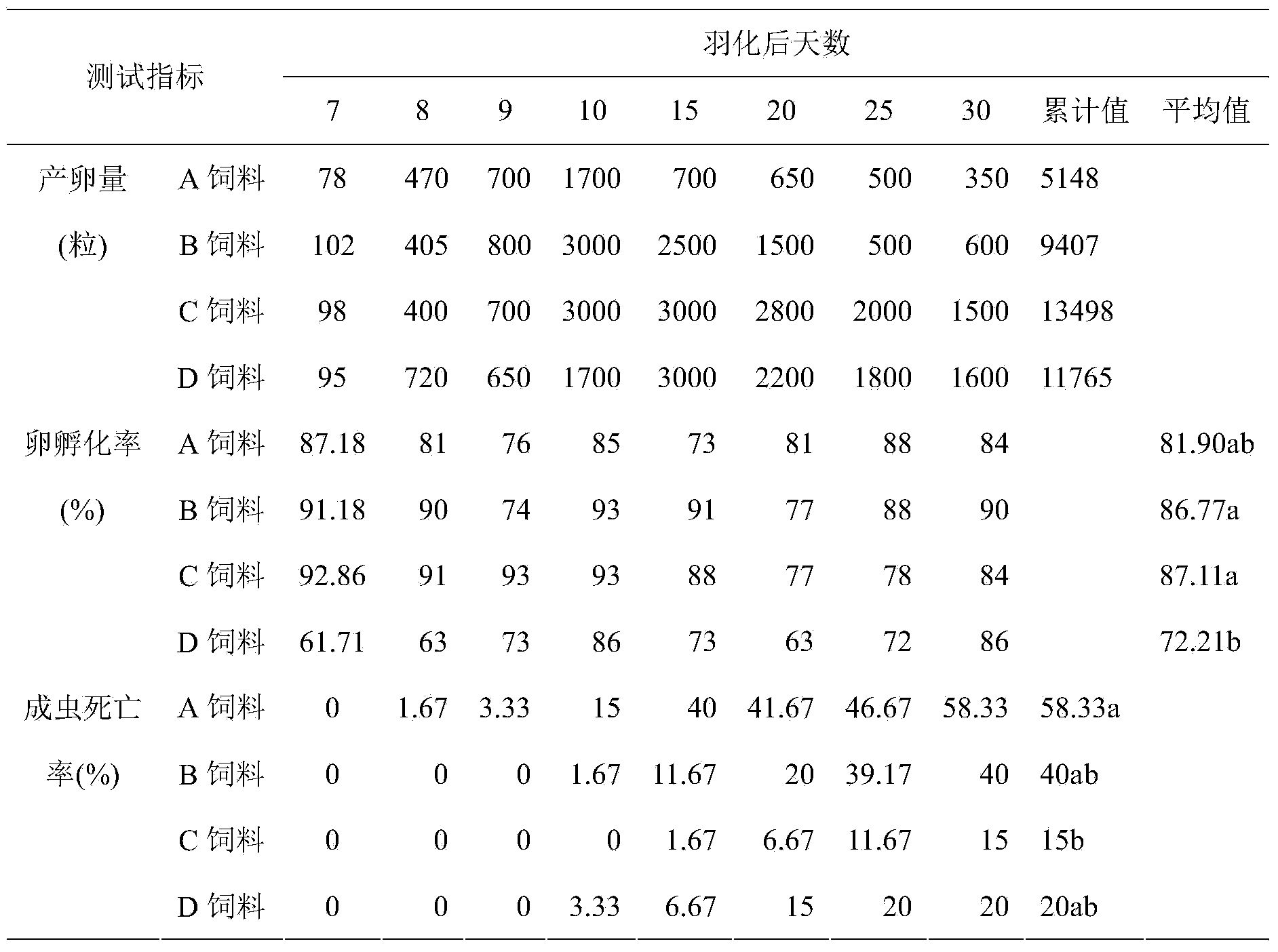Bactrocera dorsalis large-scale feeding method
A technology of Bactrocera dorsalis and pupation, which is applied in animal husbandry and other fields, can solve the problems of too many ingredients in feed, moldy feed, and low survival rate of larvae, so as to avoid seasonal food source shortage, save feed cost, and larvae good growth effect
- Summary
- Abstract
- Description
- Claims
- Application Information
AI Technical Summary
Problems solved by technology
Method used
Image
Examples
Embodiment 1
[0014] Embodiment 1 large-scale breeding of Bactrocera dorsalis
[0015] 1. Adult artificial diet screening
[0016] 30 pairs of newly emerged female and male adults per cage provide 4 different feeds respectively. Feed A is yeast: sucrose=1:3; Feed B is yeast extract: sucrose=1:5; Feed C is yeast extract: sucrose= 1:8 (both mass ratio); D feed is the adult feed formula of Yuan Shengyong (2006). On the 7th day after adult eclosion, eggs were collected, put into the ovum collection tube at 9:00 every day, and taken out at 17:00, and recorded the number of eggs laid and the number of dead adults every day. The hatching rate of eggs was randomly selected 100 eggs, and the number of hatched larvae was observed, and the hatching rate of larvae and the mortality rate of adults were counted.
[0017] Table 1 Effects of different adult feeds on egg production, egg hatching rate and adult mortality of Bactrocera dorsalis
[0018]
[0019] Note: The adult mortality in the table is...
PUM
 Login to View More
Login to View More Abstract
Description
Claims
Application Information
 Login to View More
Login to View More - R&D
- Intellectual Property
- Life Sciences
- Materials
- Tech Scout
- Unparalleled Data Quality
- Higher Quality Content
- 60% Fewer Hallucinations
Browse by: Latest US Patents, China's latest patents, Technical Efficacy Thesaurus, Application Domain, Technology Topic, Popular Technical Reports.
© 2025 PatSnap. All rights reserved.Legal|Privacy policy|Modern Slavery Act Transparency Statement|Sitemap|About US| Contact US: help@patsnap.com


